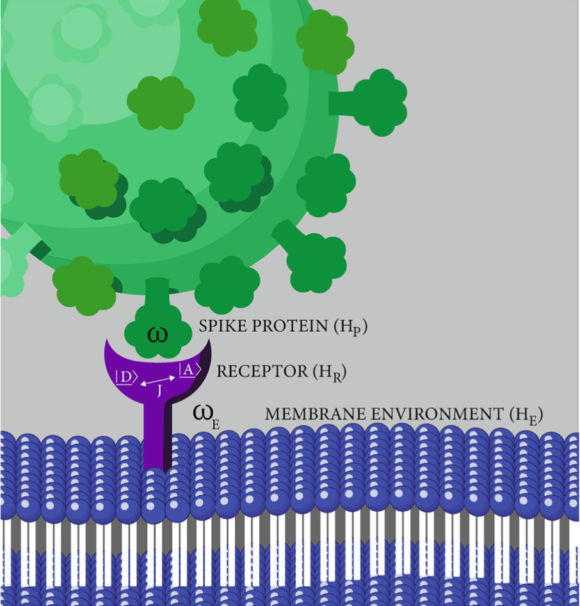The latest paper with Betony Adams, Ilya Sinayskiy and Rienk van Grondelle was published in Scientific Reports.

A simplified illustration of vibration assisted tunnelling in the context of SARS-CoV-2 infection. The spike protein vibrational spectrum matches the energy of transition for an electron in the ACE2 receptor, facilitating electron transfer and the activation of the receptor.
Abstract:
The SARS‐CoV‐2 pandemic has added new urgency to the study of viral mechanisms of infection. But while vaccines offer a measure of protection against this specific outbreak, a new era of pandemics has been predicted. In addition to this, COVID‐19 has drawn attention to post‐viral syndromes and the healthcare burden they entail. It seems integral that knowledge of viral mechanisms is increased through as wide a research field as possible. To this end we propose that quantum biology might offer essential new insights into the problem, especially with regards to the important first step of virus‐ host invasion. Research in quantum biology often centres around energy or charge transfer. While this is predominantly in the context of photosynthesis there has also been some suggestion that cellular receptors such as olfactory or neural receptors might employ vibration assisted electron tunnelling to augment the lock‐and‐key mechanism. Quantum tunnelling has also been observed in enzyme function. Enzymes are implicated in the invasion of host cells by the SARS‐CoV‐2 virus. Receptors such as olfactory receptors also appear to be disrupted by COVID‐19. Building on these observations we investigate the evidence that quantum tunnelling might be important in the context of infection with SARS‐CoV‐2. We illustrate this with a simple model relating the vibronic mode of, for example, a viral spike protein to the likelihood of charge transfer in an idealised receptor. Our results show a distinct parameter regime in which the vibronic mode of the spike protein enhances electron transfer. With this in mind, novel therapeutics to prevent SARS‐CoV‐2 transmission could potentially be identified by their vibrational spectra.
